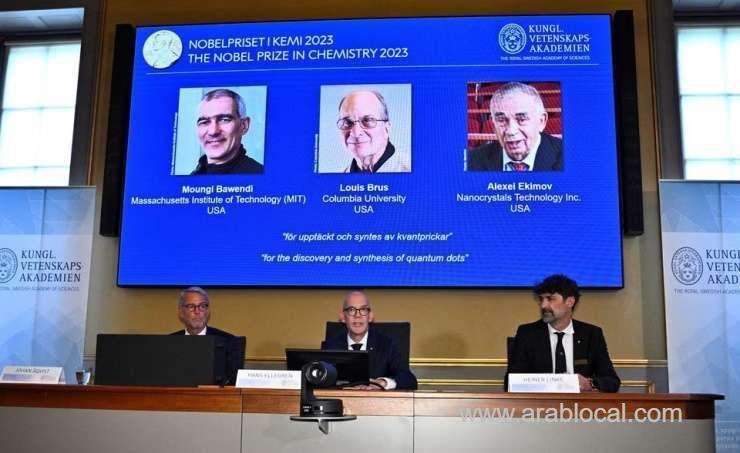
Moungi Bawendi, Louis Brus and Aleksey Ekimov won the Nobel Prize for Chemistry in 2023 for discovering quantum dots, tiny clusters of atoms. These dots are widely used today to create colours on flat screens, light emitting diode (LED) lamps, and devices that reveal blood vessels in tumors.
In a statement quoted by Reuters, the academy said quantum dots, which have the same size ratio as a football, and the earth, have added colour to the field of nanotechnology - the use of matter at an atomic or molecular level for manufacturing purposes.
A statement from the academy said researchers believe their work could lead to flexible electronics, tiny sensors, thinner solar cells, and encrypted quantum communication in the future.
The prize is worth 11 million Swedish crowns ($1 million) and is awarded by the Royal Swedish Academy of Sciences.
Quantum dots exhibit a "fascinating and unusual property" in that their light color changes depending on their particle size, while maintaining their atomic structure, according to Nobel Committee Chair Johan Aqvist.
By phone from the United States, Bawendi described his feelings about hearing the news of his award as "very surprised, sleepy, shocked, unexpected and very honored."
Researchers are still heavily researching quantum dots, he said. There's going to be something really interesting coming out of this."
In the early 1980s, Ekimov developed quantum dot technology that enabled high-definition QLED TVs sold by Samsung (005930.KS), Sony (6758.T) or TCL (000100.SZ).
In his time, he discovered that the colour of glass changes with the size of copper chloride molecules contained within it.
In a phone interview with Reuters, 78-year-old Ekimov praised the latest flat screen technology, something he had not anticipated during his early pioneering work in the Soviet Union. As he laughed, he recalled what TVs were like back then.
The work was extended to fluids a few years later by Brus.
Bawendi revolutionized quantum dots production in 1993 and improved their quality. LEDs that don't emit bluish neon light were among the uses enabled by the research.
Professor Bawendi teaches at the Massachusetts Institute of Technology (MIT), Professor Brus teaches at Columbia University, and Professor Ekimov works for Nanocrystals Technology.
AT&T Bell Labs hired Brus in 1972 and he worked there for 23 years, studying nanocrystals most of the time.
In addition to growing up in France, Tunisia, and the United States, Bawendi was born in Paris.
Following this week's announcements of the Nobels for medicine and physics, the chemistry Nobel is the third this year.
With a few interruptions due to the world wars, the Nobel Prizes in science, literature, and peace have been awarded since 1901 in honor of Swedish dynamite inventor Alfred Nobel.